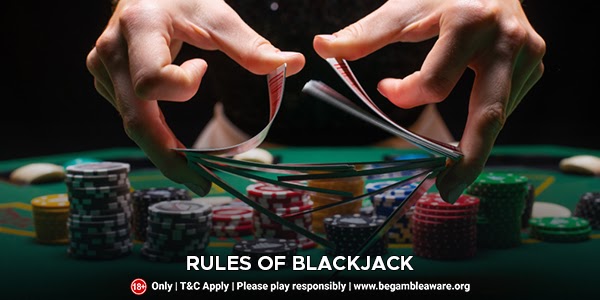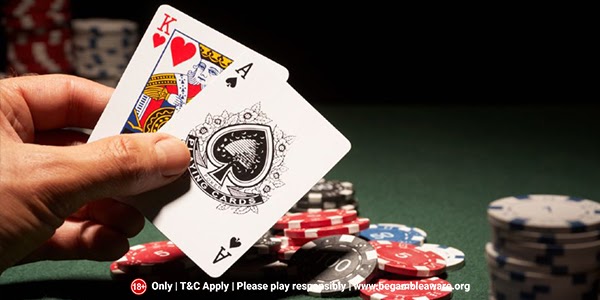
Well-known as Twenty-One, the principles of blackjack are straightforward, the drama is thrilling, and there’s a chance for a high plan. In reality, for the professional participant who mathematically plays an ideal game and can draw cards, the chances are occasionally that participants prefer to win.
But for the casual player who plays with a reasonably good match, the casino chances are less, which makes blackjack among the most attractive casino games to your participant. While the prevalence of blackjack goes from World War I, its origins return to the 1760s in France, in which it’s known as Vingt-et-Un (French for 21). Today, blackjack is one of the card games that may be seen in every online casino. As a favorite home game, it’s played with slightly different principles. From the casino variant, the home is the dealer (a”permanent bank”). In casino play, the dealer remains standing, and the players are all seated. The trader is responsible for conducting all facets of the game, from shuffling and dealing with the cards to managing all stakes. At the game, everyone has the chance to be the dealer (a”shifting bank”).
THE PACK
The conventional 52-card package is employed, but many decks of cards are shuffled together in most casinos. The six-deck game (312 cards) is the hottest. Additionally, the trader uses sterile plastic, which can be not dealt with but is put toward the bottom of the package to indicate whether it will be time for those cards to be reshuffled. When four or more decks are used, they can be dealt with a shoe (a box that lets the trader eliminate cards in a time, face down( without even holding a couple of packs).
OBJECT OF THE GAME
Each player tries to beat the dealer by getting a count as close to 21 as you can without going over 21.
CARD VALUES/SCORING
It’s up to every individual player if a professional is worth 1 or 11. Face cards are ten, and some other cards are their pip value.
BETTING
Before the deal begins, each player places a wager in chips, facing them at the designated place. Minimum and maximum limits are based on gambling, and the overall limitations are from $2 to $500.
THE SHUFFLE AND CUT
The trader thoroughly shuffles parts of this bunch until all of the cards are blended and united. The trader designates among those gamers to cut, and the plastic insert card has been put so the last 60 to 75 cards won’t be used. (Not working on the base of all of the cards makes it harder for skilled card counters to function efficiently.)

THE DEAL
When all of the players have placed their bets, the dealer gives one card face up to each player in turn clockwise; then, one card faces up to themselves. Yet another round of cards is then dealt face up to every player. However, the trader takes the card face down. Subsequently, every member, with the exception of that, the seller gets two cards face-up, and the vendor gets one card face up and one card face down. (In specific matches, played with just one deck, the players’ cards are dealt face down, and they get to maintain them. These days, however, virtually all Online Blackjack games include the players’ cards dealt face-up on the requirement that no player can touch any cards)
NATURALS
When a player’s first two cards are an ace and a”ten-card” (a graphic card 10), providing a count of 21 in just two cards, this can be a natural or”blackjack” If any participant has a natural and also the trader doesn’t, the dealer instantly pays that participant and a half times the quantity of their wager. If the dealer has a natural, they will immediately collect the stakes of players who don’t have naturals without wasting the player’s time, (however no extra amount). In the event the dealer and another player both have naturals, the participant’s wager is a stand-off (a tie), and the participant takes his chips back.
When the trader’s face-up card is a ten-card or an expert, they look at their face-down card to determine whether both cards create a natural. In the event that the face-up card is certainly not a ten-card or an ace, they don’t inspect the face-down card until it’s the seller’s chance to perform with.
THE PLAY
The player to the left goes and must choose whether to”stand” (not request for another card) or even”hit” (request for one more card to get nearer to a count of 21, or perhaps strike 21 precisely ). Thus, a participant may stand to the two cards initially dealt with, or they might request the merchant for additional cards, one at a time, before deciding to stand to the total (whether it’s 21 or below ), or goes”float” (if it’s over 21). In the latter scenario, the player loses, and the dealer collects the wager. The dealer then turns into another player to their left and serves them in precisely the same method.
The combination of a professional using a card aside from a ten-card is referred to as a”soft hands” since the participant can count the ace as a 1 or 11 and draw cards or never. For a model with a”soft 17″ (a pro in addition to a 6), the absolute is seventeen. Even though a count of 17 is a great hand, the participant might want to draw to get a more excellent overall score. If the draw produces a bust hand by counting the ace as an 11, the player only counts the ace as a one and proceeds to play with standing or”hitting” (requesting the dealer for additional cards, one at a time).
THE DEALER’S PLAY
Once the trader has served each participant, the trader’s charge card is flipped up. If the total is 17 or more, it has to stand. If the amount is 16 or below, they need to have a card. The dealer must continue to take cards until the total is 17 or more, where the dealer must endure. If the dealer has an ace, and counting it as 11 would bring the total to 17 or more (although not over 21), the trader needs to count the ace as 11 and endure. The trader’s choices are automatic on most plays, whereas the player always has the option of carrying a couple of cards.
SPLITTING PAIRS
When a player’s first two cards have the same denomination, for example, two jacks or two sixes, they might opt to handle them as two different hands when their turn comes around. The total amount of the initial wager goes on among the cards, and also an equal amount has to be put as a bet on the opposite card. The participant plays the hands to their left by either hitting or standing one or more occasions; just then is your hand to the player. Both hands are treated individually, and the trader settles with each on its merits. Having a set of aces, the participant is given a card for each authority and might not draw. Furthermore, if a ten-card is dealt with these aces, the payoff is equal to this wager (none and one-half into one, much like blackjack at any time).